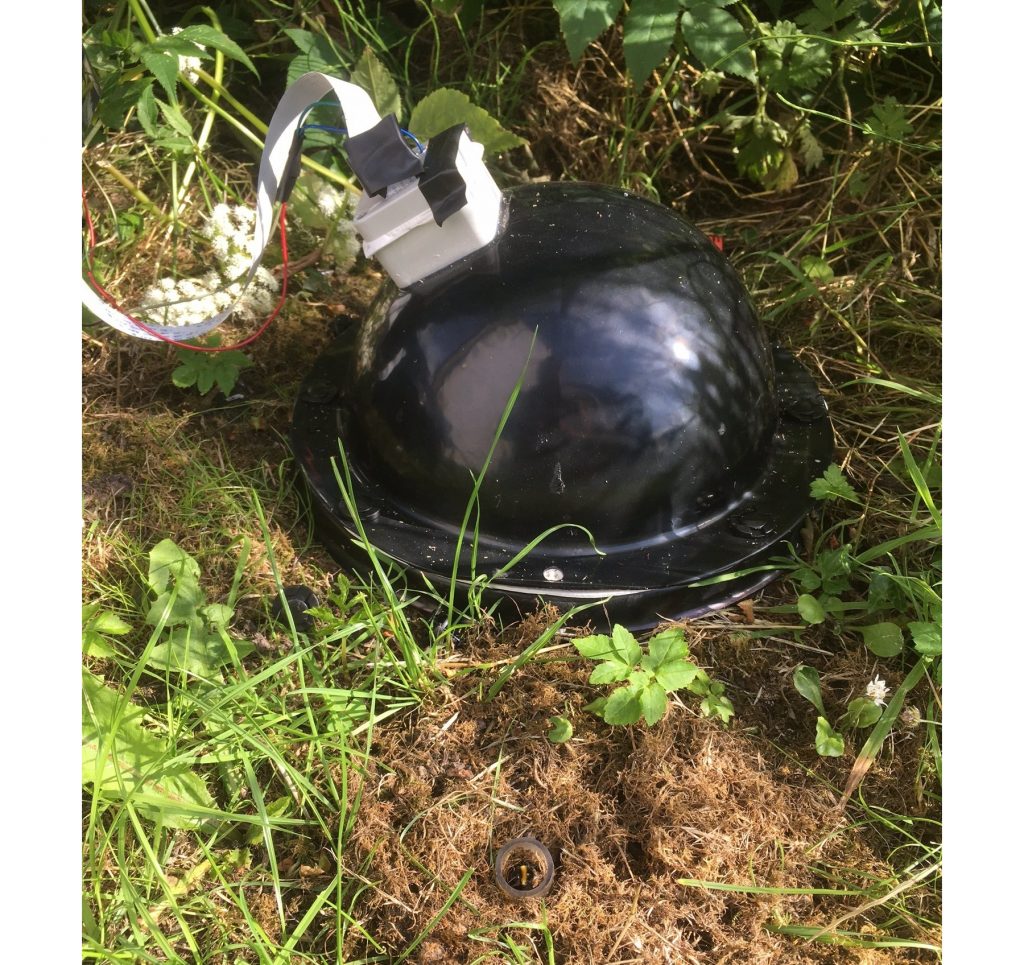In a bid to learn more about bumblebee behavior in a non-intrusive manner, researchers from Lancaster University have used 3D printing to develop a novel webcam-equipped wild bee nest.
Nicknamed the ‘Bee Box’, the nest was created by Environmental Scientist Dr. Philip Donkersley and Engineer Jenny Roberts, CEng. The design was inspired by commercially available bird boxes and provides a way to learn more about bee behavior without disrupting existing natural nests.
The hopes are that by deploying several of these nests across a variety of locations, the team can better understand how and why bumblebees choose their nest sites. Additionally, the 3D printed nests are expected to help bolster the UK’s ever-dwindling bee population. The researchers have now received Engineering and Physical Sciences Research Council (EPSRC) Impact Acceleration Account funding to produce 100 of these nests and eventually intend to sell them to the general public.
Dr. Donkersley, who researches how environmental conditions affect bee biology, said, “We were advising a film crew on a project to film some very rare arctic bees – however there was no safe way to introduce a camera without damaging the nest. This got us thinking. My father-in-law had recently bought a bird box with a camera already installed and it seemed the obvious thing to do to try to design something that would work for wild bumblebees.”

A new take on bumblebee conservation
Bumblebees are an extremely important part of the ecosystem as they serve as one of nature’s most valuable pollinators. By landing on flowers, their fuzzy bodies are able to extract pollen from a wide range of plant types, enabling cross-pollination in areas that would otherwise not experience it and giving us food security.
Unfortunately, most bumblebee species are in decline due to a combination of extreme weather, loss of habitat, and increased pesticide use. There are now a whole host of media campaigns dedicated to bee conservation, each designed to raise awareness of the issue and help combat the problem. Many of these initiatives help by planting wildflowers for the bees to feed on, but there still seems to be a distinct lack of habitat creation.
Donkersley referred to his device as the missing half of bee ‘Bed and Breakfast’: “One of my biggest bugbears about bee conservation is that we are always planting more food for them, but rarely doing any work on providing nesting sites for wild bees. These beeboxes are going to address that for agricultural and urban areas.”

The 3D printed Bee Box
The Bee Box is produced using a combination of 3D printing and molding, and made out of recycled plastic. It’s a light-proof, dome-shaped cavity with a narrow pipe for an entrance, just like a regular nest. It can be buried underground and is robust enough to survive the elements, as well as tampering from curious mammals such as cows. According to Donkersley’s team, the devices are already very popular with queen bees looking for a safe place to establish a nest.
Inside is an integrated Raspberry Pi computer, infrared lighting, and a camera module for observation purposes. Since all of the components are installed during the assembly phase, it’s possible to see what the colony does day-to-day without having to disrupt the nest and risk a hostile response.
Having installed one of the early prototypes in his own garden, Donkersley is now the proud beekeeper of a colony of ‘bombus terrestris’ bumblebees. The researchers hope their invention will offer insights for environmental scientists, conservationists, and gardeners, and are also in contact with pest control companies to work on new ‘rehousing’ services.
Additive manufacturing has undeniable benefits for the heavy industrial sectors, but has proven itself to be extremely beneficial for environmentally-conscious applications too. Just last month, researchers at Santa Clara University used 3D printing to build an upgraded version of a hydration sensing unit deployed in agricultural irrigation systems. By redesigning and 3D printing some of the components of these sensors, the engineers were been able to improve their thermal detection capabilities and shrink their overall size.
Elsewhere, the French National Research Institute for Development (IRD) has previously 3D printed a water pollution sensor for the wild using Formlabs’ SLA technology. The low-cost device enabled non-specialists in the wild to test waters and collect pollution data, thus creating a real citizen observation network.
Subscribe to the 3D Printing Industry newsletter for the latest news in additive manufacturing. You can also stay connected by following us on Twitter, liking us on Facebook, and tuning into the 3D Printing Industry YouTube Channel.
Looking for a career in additive manufacturing? Visit 3D Printing Jobs for a selection of roles in the industry.
Featured image shows a buff-tailed bumblebee. Photo via Bumblebee Conservation Trust.



